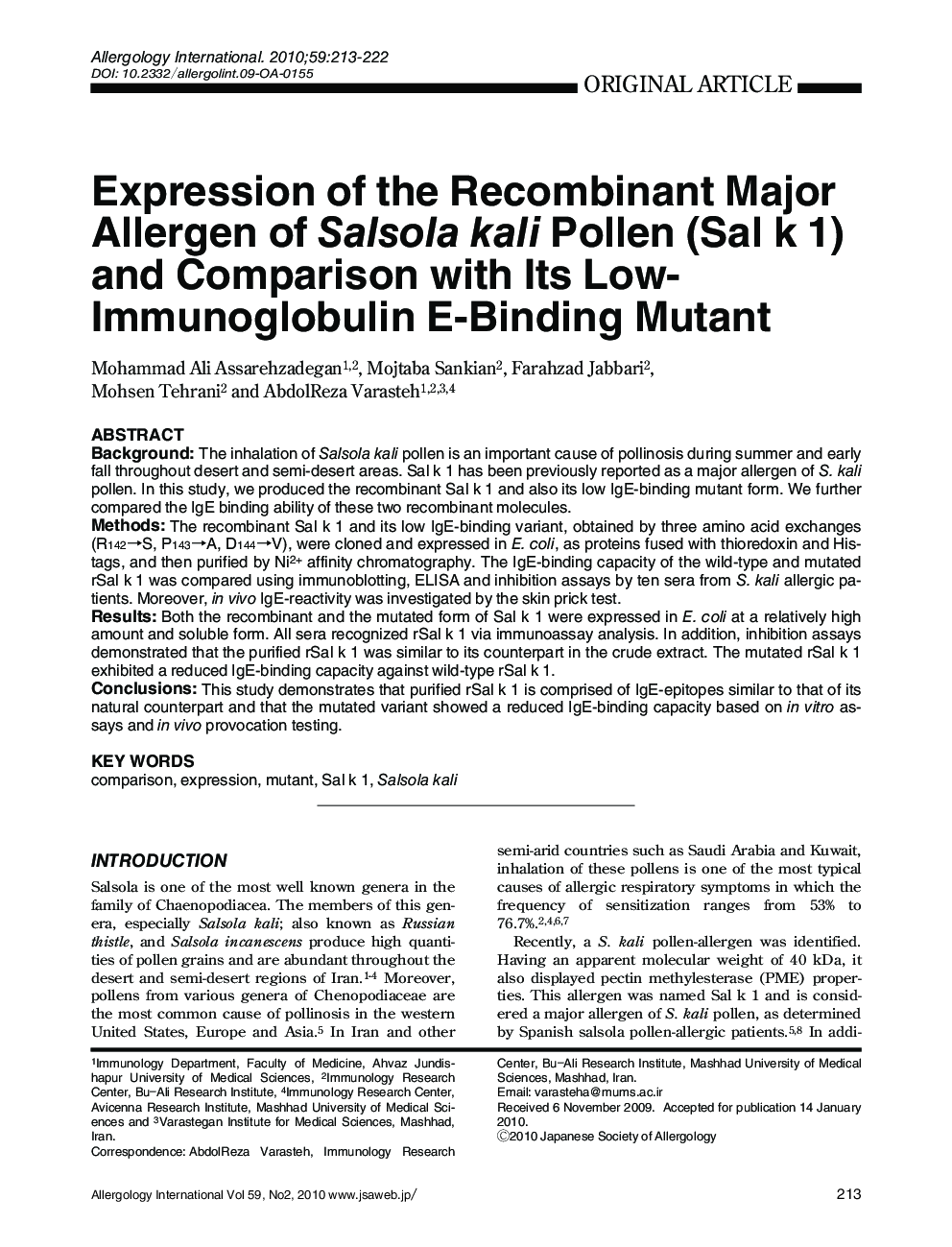| کد مقاله | کد نشریه | سال انتشار | مقاله انگلیسی | نسخه تمام متن |
|---|---|---|---|---|
| 3341049 | 1214087 | 2010 | 10 صفحه PDF | دانلود رایگان |

ABSTRACTBackgroundThe inhalation of Salsola kali pollen is an important cause of pollinosis during summer and early fall throughout desert and semi-desert areas. Sal k 1 has been previously reported as a major allergen of S. kali pollen. In this study, we produced the recombinant Sal k 1 and also its low IgE-binding mutant form. We further compared the IgE binding ability of these two recombinant molecules.MethodsThe recombinant Sal k 1 and its low IgE-binding variant, obtained by three amino acid exchanges (R142→ S, P143→ A, D144→ V), were cloned and expressed in E. coli, as proteins fused with thioredoxin and Histags, and then purified by Ni2+ affinity chromatography. The IgE-binding capacity of the wild-type and mutated rSal k 1 was compared using immunoblotting, ELISA and inhibition assays by ten sera from S. kali allergic patients. Moreover, in vivo IgE-reactivity was investigated by the skin prick test.ResultsBoth the recombinant and the mutated form of Sal k 1 were expressed in E. coli at a relatively high amount and soluble form. All sera recognized rSal k 1 via immunoassay analysis. In addition, inhibition assays demonstrated that the purified rSal k 1 was similar to its counterpart in the crude extract. The mutated rSal k 1 exhibited a reduced IgE-binding capacity against wild-type rSal k 1.ConclusionsThis study demonstrates that purified rSal k 1 is comprised of IgE-epitopes similar to that of its natural counterpart and that the mutated variant showed a reduced IgE-binding capacity based on in vitro assays and in vivo provocation testing.
Journal: Allergology International - Volume 59, Issue 2, 2010, Pages 213-222